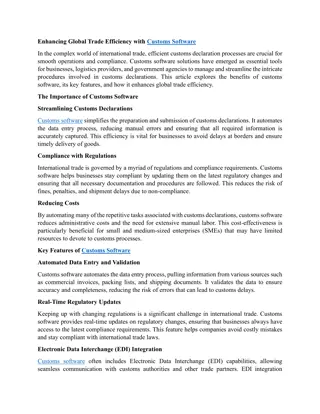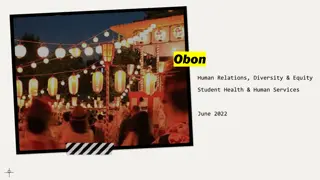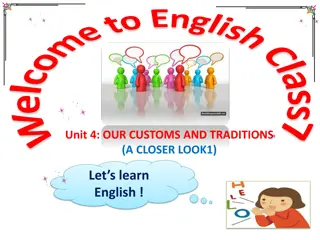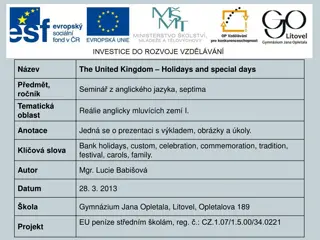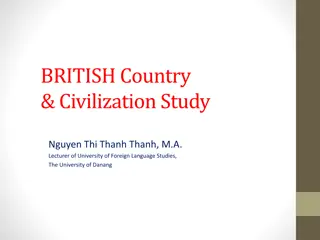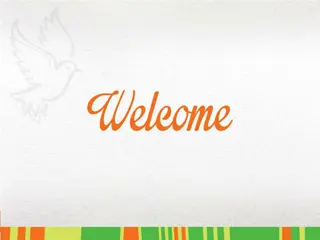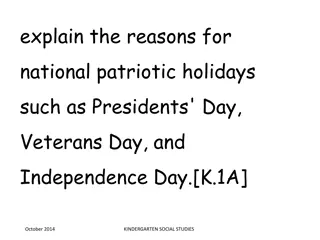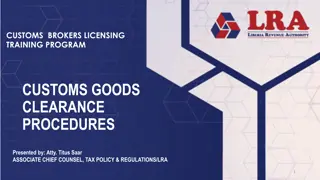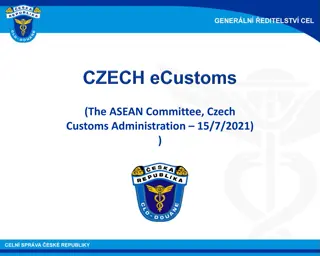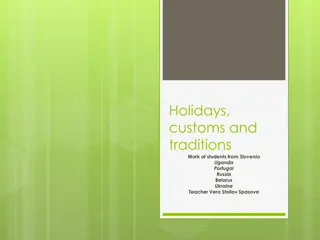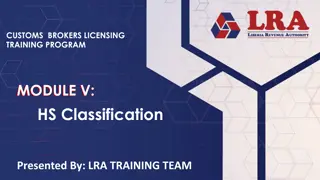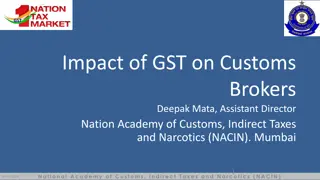Exploring Customs, Holidays, and Influential Figures in Social Studies
Dive into the origins of customs, holidays, and celebrations of communities, states, and nations, such as San Jacinto Day, Independence Day, and Veterans Day. Explore the observance of holidays past and present, identify contributions of historical figures like Sam Houston and George Washington, and learn about individualism and inventiveness of figures such as Alexander Graham Bell and Thomas Edison. Compare the similarities and differences among these influential figures and understand the concepts of past, present, and future. Develop skills to describe and measure calendar time, create timelines, and locate places using cardinal directions.
Download Presentation

Please find below an Image/Link to download the presentation.
The content on the website is provided AS IS for your information and personal use only. It may not be sold, licensed, or shared on other websites without obtaining consent from the author. Download presentation by click this link. If you encounter any issues during the download, it is possible that the publisher has removed the file from their server.
E N D
Presentation Transcript
describe the origins of customs, holidays, and celebrations of the community, state, and nation such as San Jacinto Day, Independence Day, and Veterans Day.[1.1A] October 2014 SOCIAL STUDIES FIRST GRADE
compare the observance of holidays and celebrations, past and present.[1.1B] October 2014 SOCIAL STUDIES FIRST GRADE
identify contributions of historical figures, including Sam Houston, George Washington, Abraham Lincoln, and Martin Luther King Jr., who have influenced the community, state, and nation.[1.2A] October 2014 SOCIAL STUDIES FIRST GRADE
identify historical figures such as Alexander Graham Bell, Thomas Edison, Garrett Morgan, and Richard Allen, and other individuals who have exhibited individualism and inventiveness.[1.2B] October 2014 SOCIAL STUDIES FIRST GRADE
compare the similarities and differences among the lives and activities of historical figures and other individuals who have influenced the community, state, and nation.[1.2C] October 2014 SOCIAL STUDIES FIRST GRADE
distinguish among past, present, and future.[1.3A] October 2014 SOCIAL STUDIES FIRST GRADE
describe and measure calendar time by days, weeks, months, and years.[1.3B] October 2014 SOCIAL STUDIES FIRST GRADE
create a calendar and simple timeline.[1.3C] October 2014 SOCIAL STUDIES FIRST GRADE
locate places using the four cardinal directions.[1.4A] October 2014 SOCIAL STUDIES FIRST GRADE
describe the location of self and objects relative to other locations in the classroom and school.[1.4B] October 2014 SOCIAL STUDIES FIRST GRADE
create and use simple maps such as maps of the home, classroom, school, and community.[1.5A] October 2014 SOCIAL STUDIES FIRST GRADE
locate the community, Texas, and the United States on maps and globes.[1.5B] October 2014 SOCIAL STUDIES FIRST GRADE
identify and describe the physical characteristics of place such as landforms, bodies of water, natural resources, and weather.[1.6A] October 2014 SOCIAL STUDIES FIRST GRADE
identify examples of and uses for natural resources in the community, state, and nation.[1.6B] October 2014 SOCIAL STUDIES FIRST GRADE
identify and describe how the human characteristics of place such as shelter, clothing, food, and activities are based upon geographic location.[1.6C] October 2014 SOCIAL STUDIES FIRST GRADE
describe ways that families meet basic human needs.[1.7A] October 2014 SOCIAL STUDIES FIRST GRADE
describe similarities and differences in ways families meet basic human needs.[1.7B] October 2014 SOCIAL STUDIES FIRST GRADE
identify examples of goods and services in the home, school, and community.[1.8A] October 2014 SOCIAL STUDIES FIRST GRADE
identify ways people exchange goods and services.[1.8B] October 2014 SOCIAL STUDIES FIRST GRADE
identify the role of markets in the exchange of goods and services.[1.8C] October 2014 SOCIAL STUDIES FIRST GRADE
identify examples of people wanting more than they can have.[1.9A] October 2014 SOCIAL STUDIES FIRST GRADE
explain why wanting more than they can have requires that people make choices.[1.9B] October 2014 SOCIAL STUDIES FIRST GRADE
identify examples of choices families make when buying goods and services.[1.9C] October 2014 SOCIAL STUDIES FIRST GRADE
describe the components of various jobs and the characteristics of a job well performed.[1.10A] October 2014 SOCIAL STUDIES FIRST GRADE
describe how specialized jobs contribute to the production of goods and services.[1.10B] October 2014 SOCIAL STUDIES FIRST GRADE
explain the purpose for rules and laws in the home, school, and community.[1.11A] October 2014 SOCIAL STUDIES FIRST GRADE
identify rules and laws that establish order, provide security, and manage conflict.[1.11B] October 2014 SOCIAL STUDIES FIRST GRADE
identify the responsibilities of authority figures in the home, school, and community.[1.12A] October 2014 SOCIAL STUDIES FIRST GRADE
identify and describe the roles of public officials in the community, state, and nation.[1.12B] October 2014 SOCIAL STUDIES FIRST GRADE
identify and describe the role of a good citizen in maintaining a constitutional republic.[1.12C] October 2014 SOCIAL STUDIES FIRST GRADE
identify characteristics of good citizenship, including truthfulness, justice, equality, respect for oneself and others, responsibility in daily life, and participation in government by educating oneself about the issues, respectfully holding public officials to their word, and voting.[1.13A] October 2014 SOCIAL STUDIES FIRST GRADE
identify historical figures such as Benjamin Franklin, Francis Scott Key, and Eleanor Roosevelt who have exemplified good citizenship.[1.13B] October 2014 SOCIAL STUDIES FIRST GRADE
identify other individuals who exemplify good citizenship.[1.13C] October 2014 SOCIAL STUDIES FIRST GRADE
explain state and national patriotic symbols, including the United States and Texas flags, the Liberty Bell, the Statue of Liberty, and the Alamo.[1.14A] October 2014 SOCIAL STUDIES FIRST GRADE
recite and explain the meaning of the Pledge of Allegiance to the United States Flag and the Pledge to the Texas Flag.[1.14B] October 2014 SOCIAL STUDIES FIRST GRADE
identify anthems and mottoes of Texas and the United States.[1.14C] October 2014 SOCIAL STUDIES FIRST GRADE
explain and practice voting as a way of making choices and decisions.[1.14D] October 2014 SOCIAL STUDIES FIRST GRADE
explain how patriotic customs and celebrations reflect American individualism and freedom.[1.14E] October 2014 SOCIAL STUDIES FIRST GRADE
identify Constitution Day as a celebration of American freedom.[1.14F] October 2014 SOCIAL STUDIES FIRST GRADE
describe and explain the importance of various beliefs, customs, language, and traditions of families and communities.[1.15A] October 2014 SOCIAL STUDIES FIRST GRADE
explain the way folktales and legends such as Aesop's fables reflect beliefs, customs, language, and traditions of communities.[1.15B] October 2014 SOCIAL STUDIES FIRST GRADE
describe how technology changes the ways families live.[1.16A] October 2014 SOCIAL STUDIES FIRST GRADE
describe how technology changes communication, transportation, and recreation.[1.16B] October 2014 SOCIAL STUDIES FIRST GRADE
describe how technology changes the way people work.[1.16C] October 2014 SOCIAL STUDIES FIRST GRADE



